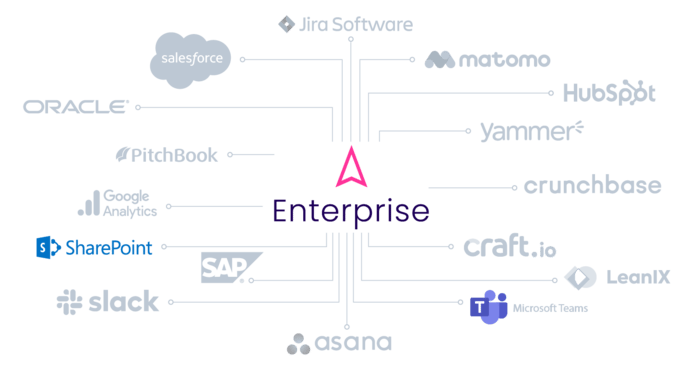Innovation is not about generating fancy ideas. It’s about translating knowledge into action using structured systems, tools, and data. That’s where innovation intelligence plays a crucial role in modern business.
By combining internal and external information, innovation intelligence helps businesses develop proven growth strategies. It turns scattered data into focused insights that drive educated, faster, and more secure innovation practices.

What is innovation intelligence?
At its core, innovation intelligence supports the development of strategies to prepare for the future. It brings together the knowledge needed to collect and act upon crucial innovation information in real time.
With the right practices in place, innovation intelligence helps businesses respond faster to change. This agility leads to more relevant innovations and more effective resource utilization.
Firms that use innovation intelligence can continuously test, refine, and evolve their innovative concepts. This creates a culture of learning and continuous improvement, driven by reliable data.
.jpg?width=800&height=565&name=Common-terminology-Environmental-Scanning-(1).jpg)
Defining innovation intelligence and why it matters today
Innovation intelligence refers to the systematic gathering, analyzing, and applying of knowledge assets to guide innovation. These include trends, technologies, customer feedback, competitors, and own capabilities, ideas, and project data.
It empowers organizations to connect data with strategic priorities. By doing so, companies can make informed decision-making a repeatable, scalable process and use their intelligence across teams effectively.
Thorough innovation knowledge management is a critical tool to identify gaps, monitor opportunities, and act proactively — before disruption happens.
How innovation intelligence differs from business intelligence
While business intelligence focuses on past and present operations, innovation intelligence looks forward. It’s built to forecast, explore possibilities, and support long-term development goals.
Innovation intelligence is proactive — it enables companies to anticipate change and act decisively.
Innovation intelligence is also broader. It integrates diverse data sources, from patents and startups to social signals, helping teams develop a competitive edge.
In short, innovation intelligence helps businesses secure their future. It blends knowledge and software into actionable insight — making innovation less of a gamble and more of a structured capability.
Core components of innovation intelligence
Innovation intelligence is about collecting information and building the ability to act on it. To do this, businesses need to combine human expertise with technology and structured processes.
By managing and connecting insights across the organization, teams can unlock relevant information to develop stronger innovation strategies. This alignment supports success from early-stage thoughts to market-ready solutions.
From data to insight: The types of innovation insights (e.g., signals, trends, ideas, projects, new products)
Innovation intelligence relies on diverse insight types. These include weak signals, market trends, customer feedback, R&D projects, and the latest developments in products and services.
Each insight adds value differently. Signals may indicate early shifts; trends reveal patterns; and customer feedback shows market reactions. Together, they offer essential input for innovation planning.
To manage these effectively, organizations need systems that filter, classify, and prioritize insights. This ensures teams concentrate efforts on the most promising and impactful opportunities.
A clear innovation process leveraging human ingenuity and data
A strong innovation intelligence system needs to integrate into the workflows of people. Human creativity combined with structured data helps develop better solutions at speed and scale.
An effective innovation process connects research, concept generation, testing, and execution in a clear, repeatable workflow. This clarity improves decision-making and accelerates time to impact.
Organizations that leverage both intuition and data can better balance exploration with execution. This dual approach increases the chances of innovation success.
Workflows and communication forms to leverage data-driven insights
Innovation thrives on collaboration. That’s why clear workflows and transparent communication are essential to make the most of innovation intelligence.
Dashboards, alerts, and shared repositories help teams surface and act on insights quickly. These features keep everyone informed and aligned with innovation goals.
The benefits? Faster execution, reduced redundancy, and smarter strategic choices rooted in real-time data and collective expertise.

From insights to action: Turning intelligence into innovation
Turning innovation intelligence into impact requires more than collecting data. It demands the ability to act swiftly, aligning insights with business strategy, stakeholder needs, and evolving industry conditions.
Companies that embed innovation intelligence into their processes can move faster, identify clearer opportunities, and gain a competitive advantage through smarter, more efficient innovation efforts.
Identifying technology advancements and trends automatically
Modern innovation intelligence software makes it possible to detect technology advancements and trends across industries automatically. This reduces the time and manual work required to track external trends and technological advancements manually.
By scanning patents, publications, and expert networks, companies gain timely knowledge that supports future-oriented strategy creation. It also enables early engagement with promising disciplines and technologies.
This automated capability enhances a company's ability to stay ahead of the curve and ensures that innovation projects are based on the most relevant external signals.

Prioritizing innovation opportunities and innovative solutions using real-time data
Not all signals and trends are equally valuable. The challenge is to prioritize them based on strategic objectives, business interests, and industry relevance.
Using real-time data, companies can evaluate innovation opportunities with clarity and confidence. This leads to more educated investments and higher efficiency.
Cross-functional teams can combine expertise to assess feasibility, desirability, and impact—ensuring that innovation commitment is both bold and realistic.
Updating innovation strategy based on new innovation insights
Innovation strategies must evolve with the market, technology, and customer needs. Fresh perspectives help align innovation activities with long-term business goals.
Frequent updates demonstrate a company’s commitment to continuous improvement and agility. They ensure that strategy reflects current realities rather than outdated assumptions.
Involving various business units in these updates builds alignment, trust, and shared ownership—key ingredients for lasting innovation success.
How to build an innovation intelligence system
In a fast-changing world, companies need structured systems to stay ahead. An innovation intelligence system enables continuous learning, strategic foresight, and data-informed decision-making across the business.
By combining knowledge, technology, and clear responsibilities, companies create the foundation for scalable innovation and long-term growth.
Implement a digital innovation intelligence software
Digital software is essential for managing innovation intelligence at scale. It centralizes innovation intel, enabling companies to address trends, technologies, and solutions across the industry.
Using a dedicated platform protects strategic assets and ensures innovation activities are aligned with business goals. This also increases efficiency and accelerates time to impact.
Companies that implement such systems gain better control of resources and ensure relevant knowledge is available at everyday work.

Define key responsibilities and ownership for key data types
Creating accountability is key to success. Define who owns what—signals, trends, tasks, projects—to maintain context and knowledge-sharing quality across the organization.
Clear responsibilities help teams address information gaps, share knowledge, and ensure knowledge is available when needed. This strengthens innovation workflows and decision-making.
Ownership also supports governance, ensuring that critical data supports both current strategy and future growth strategies.
Use automatic recommendations to find experts and dependencies
Advanced software can reveal who has relevant knowledge and industry expertise for a topic or technology. These automated recommendations connect innovation needs with internal expertise.
This helps avoid silos, making collaboration more effective and resource allocation more efficient.
By identifying dependencies early, companies can protect innovation timelines and reduce project risks.

Integrate data-led innovation insights into your regular innovation process
The real benefits come when knowledge is used continuously and everyone is aware of the existence of the innovation intelligence system. Embedding the available knowledge into stage-gate models, ideation phases, or portfolio reviews ensures relevance, creating the foundation for leveraging new technologies efficiently.
This integration aligns innovation with real-world context—enhancing agility, learning, and strategic clarity for all involved.

Build your innovation intelligence system. Today.
Knowledge is most valuable when it is shared. Get oversight of what your organization knows. Use the ITONICS Innovation OS as your central innovation intelligence platform to document and activate all your innovation expertise at the right time.
Centralize knowledge in one place: Consolidate your organization's innovation expertise by organizing trend and technology knowledge, comments, and lessons learned in a single, easy-to-access platform. Ensure that valuable knowledge is never lost and identified easily.
Find relevant experts: It is often time-consuming to identify the right experts and determine what is already known, and what capabilities exist. With ITONICS, you can involve experts recommended based on their interests and provide easy access to your capability portfolio.
Connect cross-functional teams: Scattered teams and unconnected knowledge can lead to missed growth opportunities and redundant work. ITONICS consolidates your innovation intelligence, ensuring everyone is aligned and knows what is driving the industry world.











